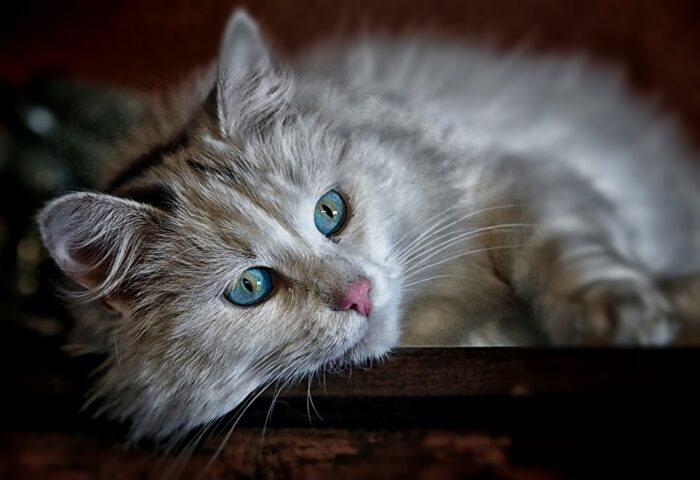Can Cats Get Distemper? What is Distemper in Cats?
Feline Distemper, medically termed as Feline Panleukopenia Virus (FPV), is a viral disease that is both highly contagious and deadly. The disease which is also sometimes referred to as Feline Parvovirus is a life-threatening and often fatal condition which affects cats alone. The virus responsible for this disease is spread through contact with bodily fluids, like urine and faeces or through direct contact with an infected cat. Also, because the FPV can live very long on surfaces (mostly, up to 2 years), direct contact with contaminated items like beddings, equipment, dishes, etc. used by infected cats can lead to the contraction of the disease. Additionally, this virus can also be spread by humans who have failed to wash their hands properly or change their clothing after handling infected cats or their grooming equipment. Many people ask can cats get distemper from dogs? The answer is no, since distemper is species specific.
Distemper in Cats
What Causes Feline Distemper in Cats?
Feline Distemper is caused by the FPV which primarily attacks a cat’s intestinal tract and immune system, allowing for the manifestation of other infections in the gastrointestinal system. This virus affects the white blood cells in the intestinal tract, bone marrow and skin; and rapidly reducing the number of cells that are in circulation. Thus, breaking down the body’s defence and making it vulnerable to all forms of infections and diseases.
Which Breed Of Cats Can Get Feline Distemper?
Cats of all breeds and ages are at risk of becoming infected with the FPV following exposure to contaminated items, body fluids or through direct contact with an infected cat. However, the unvaccinated cat population, pregnant cats and kittens (particularly those with weak or compromised immune systems) are at the highest risk of contracting Feline Distemper. The disease usually presents in a mild form in the case of older or adult cats; and some times, the symptoms may even go unnoticed.
Clinical Signs and Symptoms Of Feline Distemper
Feline Distemper mainly attacks the intestinal tract and the immune system of the cat, causing extreme gastrointestinal symptoms. The following are clinical signs that mark an attack of the disease:
- Fever
- Depression
- Weakness
- Diarrhoea (usually with bloody stool)
- Vomiting
- Dehydration
These symptoms can be quite sudden and severe that some cats succumb to death within a few hours of exhibiting the symptoms. For some other cats, the clinical signs worsen over a few days. And in cases where kittens get infected in utero or through nursing within the early days of life, they suffer severe nerve and brain damage which result to permanent inability to stand or walk, if they happen to survive the infection. For those cats who are lucky enough to withstand the Feline Distemper bout, they become immune to the disease throughout their lifetime.
Treatment Options
Currently, there are no medications available for the elimination of the FPV. Most treatments are focused on managing the symptoms, and whatever complications may arise through the administration of fluids for rehydration, antibiotics to treat secondary infections and anti-emetics for the control of vomiting. If you are going to order antibiotics or any other medication for your cat, we recommend using Walmart’s Rx Cat Pharmacy. Sadly, even with aggressive treatment, most of the infected cats still lose their lives to the disease.
Preventive Measures: Distemper Shot For Cats
Several vaccines are available for preventing the infections caused by the FPV. The distemper shot for cats is recommended for all kittens, including indoor cats.
It is the standard practice to vaccinate all kittens against FPV around their first six to eight weeks of life. Booster vaccines which are administered every three to four weeks until they get to 12 to 16 weeks of age. Other rounds of booster vaccines are further given every one to three years, though the frequency and timing of these will depend on the level of exposure risk of each cat.

